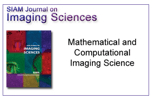
SIAM Journal on Imaging Sciences
Scope & Guideline
Transforming Insights into Imaging Science Applications.
Introduction
Aims and Scopes
- Mathematical Foundations of Imaging:
The journal emphasizes rigorous mathematical formulations and theories underpinning imaging techniques, including variational methods, inverse problems, and PDE-based approaches. - Computational Algorithms for Imaging Problems:
A significant focus is placed on the development and analysis of algorithms for solving complex imaging problems, such as image reconstruction, segmentation, and enhancement. - Application-Driven Research:
Research articles often highlight practical applications of imaging methodologies in diverse fields such as medical imaging, remote sensing, and industrial applications, demonstrating the relevance of mathematical techniques in real-world scenarios. - Interdisciplinary Approaches:
The journal encourages interdisciplinary studies that combine insights from mathematics, physics, computer science, and engineering to advance the field of imaging sciences. - Emerging Technologies and Techniques:
The journal explores new technologies such as deep learning, machine learning, and advanced statistical methods in the context of imaging sciences, reflecting the evolving landscape of the field.
Trending and Emerging
- Deep Learning and Neural Networks:
The journal has seen a significant increase in papers exploring deep learning architectures for image reconstruction, classification, and segmentation, indicating a shift towards more sophisticated, data-driven methodologies. - Inverse Problems and Regularization Techniques:
Research focusing on inverse problems, particularly in the context of imaging, has gained momentum, with an emphasis on regularization techniques that improve the stability and accuracy of solutions. - Bayesian Methods and Uncertainty Quantification:
There is a growing interest in Bayesian approaches for image analysis, which allow for the incorporation of prior knowledge and uncertainty quantification, enhancing the robustness of imaging solutions. - Multiscale and High-Dimensional Imaging:
Emerging themes include the exploration of multiscale and high-dimensional imaging techniques, reflecting the increasing complexity of data and the need for advanced mathematical frameworks to analyze them. - Hybrid Methods Combining Physics and Learning:
The integration of physics-based models with machine learning techniques is becoming prominent, as researchers seek to leverage the strengths of both approaches for improved imaging outcomes.
Declining or Waning
- Traditional Image Processing Techniques:
There has been a noticeable decline in publications focusing on classical image processing methods, such as basic filtering and enhancement techniques, as researchers increasingly turn to data-driven approaches and deep learning. - Simple Statistical Methods:
The use of straightforward statistical methods for image analysis appears to be diminishing, likely overshadowed by more sophisticated machine learning and deep learning techniques that offer improved performance and flexibility. - Low-Dimensional Linear Models:
Research focusing primarily on low-dimensional linear models for imaging tasks is becoming less prominent, as more complex models that capture non-linearities and higher-dimensional structures gain traction.
Similar Journals

PROGRAMMING AND COMPUTER SOFTWARE
Pioneering Research in Programming and Software SolutionsPROGRAMMING AND COMPUTER SOFTWARE is a distinguished journal committed to advancing the field of software development and programming methodologies. Published by PLEIADES PUBLISHING INC, this journal has been a valuable resource since its inception in 1978, reaching out to researchers, professionals, and students alike. With an emphasis on rigorous peer-reviewed articles, the journal holds a Q3 ranking in the realm of Software according to the latest 2023 Category Quartiles. Though it does not offer open access, the journal ensures that high-quality research is disseminated to its audience, providing insights into evolving programming techniques, software engineering challenges, and innovative solutions. With its convergence of years extending to 2024, PROGRAMMING AND COMPUTER SOFTWARE remains a pivotal publication, fostering a deeper understanding of the complexities in computer programming while supporting the broader software community.

EURASIP Journal on Image and Video Processing
Exploring Cutting-edge Techniques in Image ProcessingEURASIP Journal on Image and Video Processing, published by Springer, is a leading open-access journal dedicated to the dissemination of significant advancements in the field of image and video processing. Since its inception in 2007, the journal has been pivotal in bridging the gap between theoretical research and practical applications, serving a diverse audience of researchers, professionals, and students. With an impressive impact factor reflected in its 2023 Scopus rankings—ranking Q2 in Electrical and Electronic Engineering, Information Systems, and Signal Processing—this journal showcases innovative methodologies, applications, and technologies in the realm of image and video processing. Authors benefit from the journal's open-access model, promoting widespread visibility and accessibility of their work. Located in the heart of New York City, the journal continues to evolve, covering converged years from 2007 to 2024, ensuring it remains at the forefront of research in a rapidly changing technological landscape.

Image Processing On Line
Transforming insights into breakthroughs in image processing.Image Processing On Line (ISSN: 2105-1232, E-ISSN: 2105-1232) is a pioneering open-access journal published by IMAGE PROCESSING ONLINE-IPOL since 2011, dedicated to advancing the field of image processing through the dissemination of high-quality research and innovative methodologies. Based in France, the journal serves as a platform for researchers, professionals, and students to share insights and breakthroughs in the rapidly evolving domains of Signal Processing and Software. With its current ranking as Q4 in both categories according to the 2023 category quartiles, and a Scopus ranking highlighting its significance within the computer science field, the journal is focused on nurturing contributions that push the boundaries of image processing techniques. Accessible to a global audience, Image Processing On Line is crucial for those engaged in both theoretical explorations and practical applications, ensuring a collaborative repository of knowledge that fosters innovation and development in this vital area of technology.

VISUAL COMPUTER
Illuminating the Future of Computer GraphicsVISUAL COMPUTER is a prestigious journal published by Springer, focusing on the dynamic fields of computer graphics, computer-aided design, computer vision, and software. Established in 1985, this interdisciplinary journal serves as a vital platform for sharing innovative research, applications, and developments crucial to the advancement of visual computing technologies. With a notable Q2 ranking in various categories, including Computer Graphics and Computer-Aided Design, and Computer Vision and Pattern Recognition, VISUAL COMPUTER demonstrates a solid impact within the academic community, marked by its Scopus rankings that reflect its significant contributions to the field. While the journal does not offer open access, it remains a reliable source of high-quality content for researchers, professionals, and students eager to stay abreast of emerging trends and techniques, ultimately fostering collaboration and knowledge exchange within the rapidly evolving landscape of visual computing.
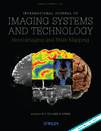
INTERNATIONAL JOURNAL OF IMAGING SYSTEMS AND TECHNOLOGY
Bridging Disciplines through Cutting-Edge Imaging ResearchINTERNATIONAL JOURNAL OF IMAGING SYSTEMS AND TECHNOLOGY, published by Wiley, is a leading journal dedicated to advancing the field of imaging systems and technologies. With an ISSN of 0899-9457 and E-ISSN 1098-1098, this esteemed journal offers a platform for high-quality research spanning essential interdisciplinary areas, including Biomedical Engineering, Computer Science, and Health Informatics. Recognized for its impactful contributions, it holds a commendable position in the Q2 quartile across multiple categories as of 2023. The journal boasts an excellent Scopus ranking, with notable acknowledgments like rank #49 out of 333 in Radiology, Nuclear Medicine, and Imaging, showcasing its relevance and importance in the academic community. Publishes annually from 1989 to 2024, it aims to bridge gaps in knowledge and foster innovative developments through rigorous peer-reviewed articles. Though it operates under a traditional access model, the journal maintains an accessible repository of cutting-edge research, making it indispensable for researchers, professionals, and students alike seeking to stay at the forefront of imaging technology advancements.
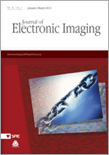
JOURNAL OF ELECTRONIC IMAGING
Pioneering Research in Imaging Science and Applications.JOURNAL OF ELECTRONIC IMAGING, published by SPIE - Society of Photo-Optical Instrumentation Engineers, stands at the intersection of cutting-edge research in various fields including Atomic and Molecular Physics, Optics, and Computer Science Applications. With an ISSN of 1017-9909 and an E-ISSN of 1560-229X, this esteemed journal has been a significant contributor to the scientific community since its inception in 1993, continuing its mission to provide a platform for innovative research through 2024. Operating from its headquarters in Bellingham, WA, United States, the journal is currently categorized in the third quartile for major domains such as Electrical and Electronic Engineering, indicating a robust engagement with contemporary topics and advancements. Although it is not an Open Access journal, it remains accessible to a wide audience of researchers, professionals, and students through institutional subscriptions. With its impactful contributions and a comprehensive view of electronic imaging, this journal not only serves as a vital resource but also drives discussions that shape the future of this rapidly evolving field.
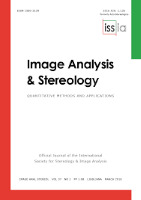
Image Analysis & Stereology
Unlocking the Potential of Image AnalysisImage Analysis & Stereology is a premier open-access journal dedicated to the dynamic fields of image analysis and stereological methods, published by the International Society for Stereology. Since its inception in 2000, this journal has provided an essential platform for researchers and professionals to disseminate their findings and share innovative methodologies across various disciplines, including Acoustics, Biotechnology, Computer Vision, and Materials Science. As a respected publication with a broad scope, the journal holds a Q3 ranking across multiple categories and is indexed in Scopus. With its commitment to advancing research and enhancing academic discourse, Image Analysis & Stereology is vital for anyone involved in quantitative imaging studies, offering valuable insights and access to groundbreaking research in a rapidly evolving landscape.
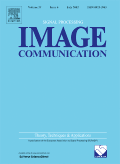
SIGNAL PROCESSING-IMAGE COMMUNICATION
Unveiling the Future of Visual TechnologySIGNAL PROCESSING-IMAGE COMMUNICATION, published by Elsevier, is a leading journal in the fields of Computer Vision, Signal Processing, and Electrical Engineering. With an impressive range of Quartile rankings in 2023, including Q1 in Electrical and Electronic Engineering and Q2 in Signal Processing, this journal is vital for researchers and professionals seeking the latest advancements and comprehensive studies in image communication technologies. Issued in the Netherlands, SIGNAL PROCESSING-IMAGE COMMUNICATION has been an essential resource since its inception in 1989, fostering innovation and collaboration among academia and industry. The journal provides a platform for high-quality peer-reviewed research, addressing significant challenges and solutions in the convergence of image processing and communication. Although currently not an Open Access journal, it offers subscription options that ensure a broad dissemination of groundbreaking knowledge. With a robust reputation reflected in its Scopus ranks, this journal serves as an indispensable reference for students and experts aiming to stay at the forefront of developments in this dynamic field.

Computational Visual Media
Advancing innovation in visual computation.Computational Visual Media, published by TSINGHUA UNIVERSITY PRESS, is a premier open access journal dedicated to advancing the fields of Artificial Intelligence, Computer Graphics and Computer-Aided Design, and Computer Vision and Pattern Recognition. Since its inception in 2015, it has established a robust position within the academic community, consistently achieving Q1 rankings across its categories as of 2023. With exceptional Scopus rankings, including a remarkable percentile standing in the top 10% globally, the journal serves as a vital resource for researchers, professionals, and students eager to explore cutting-edge methodologies and technologies in computational visual media. The journal’s open access format enhances accessibility, fostering global collaboration and dissemination of knowledge, making it an indispensable platform for those at the forefront of innovation in these dynamic fields. The journal is headquartered in Beijing, China, and aims to publish high-quality research that not only contributes to theoretical advancements but also addresses practical challenges within computational visual technologies.

Proceedings of the Romanian Academy Series A-Mathematics Physics Technical Sciences Information Science
Empowering Research in Mathematics, Physics, and BeyondProceedings of the Romanian Academy Series A-Mathematics Physics Technical Sciences Information Science, published by EDITURA ACAD ROMANE, is a noteworthy academic journal that serves as a platform for disseminating original research in the intersecting fields of mathematics, physics, engineering, and computer science. With an ISSN of 1454-9069, this journal not only highlights the vibrant academic contributions from Romania but also attracts international submissions, thus fostering global collaboration. Though it currently does not offer an open-access model, the journal remains indexed in significant databases, reflecting its commitment to quality and scholarly rigor. The journal’s impact can be seen through its rankings, including Q4 in Computer Science, Q3 in Engineering, and Q4 across Mathematics and Physics, as well as its Scopus percentile rankings, which indicate meaningful contributions to these domains. With a converged publication span from 2008 to 2024, it aims to catalyze advancements in technical sciences while enriching the academic discourse among researchers, professionals, and students alike. The journal’s headquarters in Bucharest, Romania, positions it as a key player in the Eastern European academic landscape, making it essential reading for those engaged in cutting-edge research.